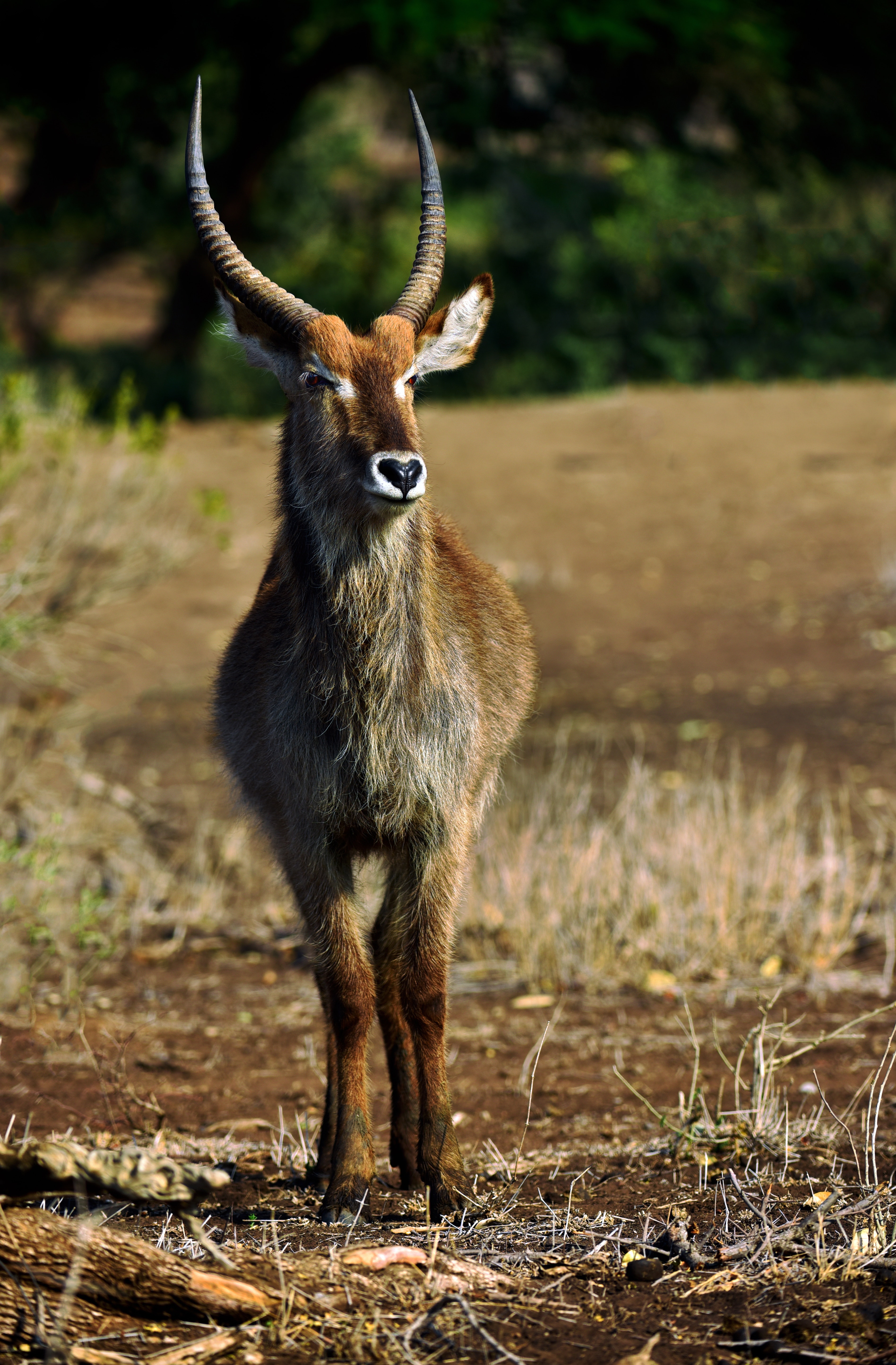The waterbuck (Kobus ellipsiprymnus) is a large, strong antelope, with bulls weighing up to 262 kg, and cows somewhat smaller. Waterbuck have a brownish-grey coat, the eyes and nose are patched with white, and the neck has a white collar. The large rounded ears are also a prominent feature. Only the bulls have long, forward-curved horns.
Waterbuck may form herds consisting of 6 to around 30 individuals. Males start showing territorial behaviour from the age of five years, but are most dominant from the age of six to nine. Both sexes emit a musky, greasy secretion, which can also be smelled by humans, and normally lingers at resting sites. This secretion is thought to be for waterproofing.
Habitat – where to spot a waterbuck
Waterbuck in South Africa have always naturally occurred in the northern parts of the country and in Mpumalanga, the North West, KwaZulu–Natal and the Eastern Cape. Waterbuck prefer open dry country with savanna grassland, bushveld and sometimes hilly areas and, as the name suggests, waterbucks are very water dependent and will never be seen too far from a water source.
Floatability – the swimming antelope
The waterbuck has a lot of hair around its neck, making it look as if it should be living in much colder areas, but there is a functionality to this hair, as it is all hollow. The hollow hair allows for extra floatability when swimming, helping the waterbuck to keep their heads above the water. To keep the functionality of the hollowness, the waterbuck releases a special oil over the hair which repels the water and keeps the hair dry. Waterbuck have been known to evade predators by rushing into water as the predators, such as lions and leopards, are very reluctant to get themselves wet.


